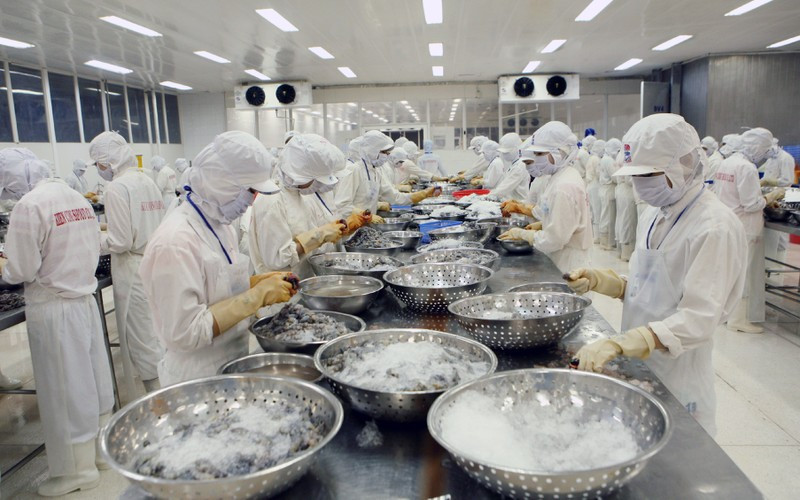To accelerate this process, it is necessary to have a clear roadmap and objectives according to the implementation phases, along with appropriate policy mechanisms, enough to attract investment in circular agriculture.
Chairman of the Vietnam Council of Agricultural Enterprises Ha Van Thang said that: Most people and businesses in agriculture currently apply the traditional one-way linear model. In this model, natural resources are used as input materials for the production and processing of an independent product line. The higher the productivity, the more resources are exploited and the larger the waste by-products after the production process, because there is no mechanism to reuse or use as input materials for the production of other products. As a result, resources are used wastefully and inefficiently. Therefore, to build circular agriculture, it is necessary to pay attention to effective by-product treatment through the application of high technology.
According to the Deputy Head of the Agricultural Project Management Department under the Ministry of Agriculture and Rural Development Nguyen The Hinh, there are now several circular economy models in livestock that have been implemented from programmes and projects in Vietnam. Environmental treatment technologies introduced by the projects, such as solid waste treatment by separators; gas waste treatment by biogas generators; liquid waste treatment by irrigation systems, have brought about a high-profit margin.
Large farms all achieve profit margins of more than 20%, a payback period of 5 to 6 years. However, there are still many difficulties and policy problems that need to be removed to replicate the model, bringing economic and environmental efficiency to the community and people.
Specifically, for the power generation model, the Government has not allowed biogas electricity to connect to the national grid, so the biogas electricity produced cannot be fully consumed, leading to an increase in the cost of 1kWh, which is higher than the selling price of electricity from the national grid.
As for the model of manure separators to produce organic fertilizers, most livestock farms produce fertilizers spontaneously on a small and medium scale, so they are not familiar with the procedures for registration of trading and transportation of organic fertilizer.
Therefore, the production, trading and transportation of organic fertilizers on a small scale face many obstacles. This leads to the production and use of organic fertilizers from livestock waste often stopping at the level of self-sufficiency within the farm. Therefore, it is necessary to have a policy to develop a system of collecting and consuming organic fertilizers made from livestock waste in small and medium-sized farms.
Not only individual fields such as livestock, but overall agricultural sectors such as cultivation, fisheries, and forestry also need open policies to promote the circular economy.
Tran Cong Thang, Director of the Institute for Policy and Strategy for Agriculture and Rural Development, said that Vietnam needs to soon build a strong enough legal framework, to ensure that there are mechanisms and policies to promote circular agriculture, such as: developing a national action programme on the use and treatment of agricultural, forestry and fishery by-products and wastes; completing national technical regulations guiding the collection, classification and treatment of by-products; having mechanisms and policies to attract investment in innovation, technology development, processing and processing plants for high value-added products such as policies on tax exemption and reduction, adding prices to products; policies on trade promotion, development of consumer markets for products processed from agricultural by-products; policies to promote public-private cooperation in the treatment of agricultural by-products, to create high added value.
In addition, it is necessary to strengthen environmental regulations based on consolidating and rationalizing the legal system to accelerate the application of sustainable farming methods, making an important contribution to the improvement of circular agriculture.
















